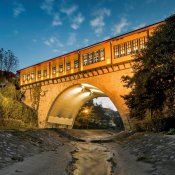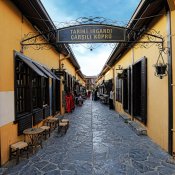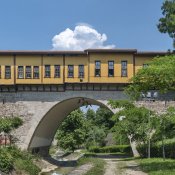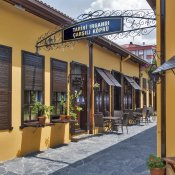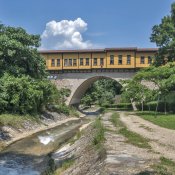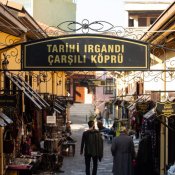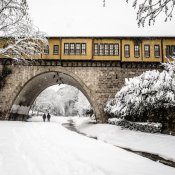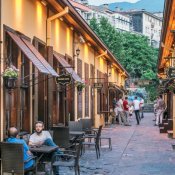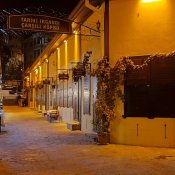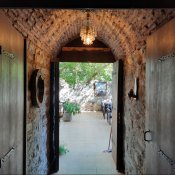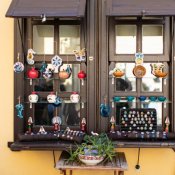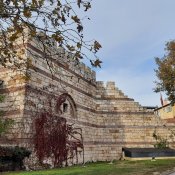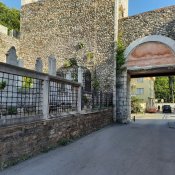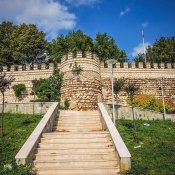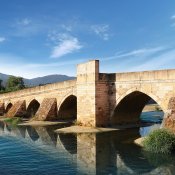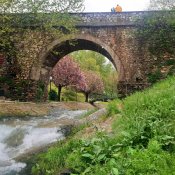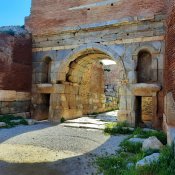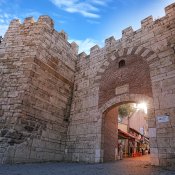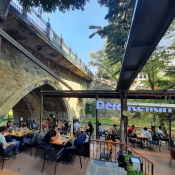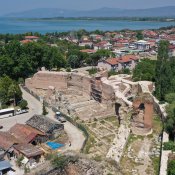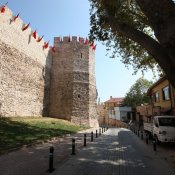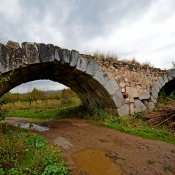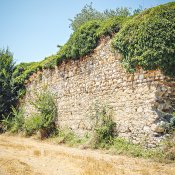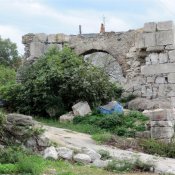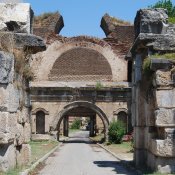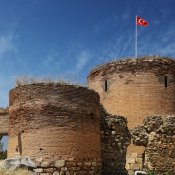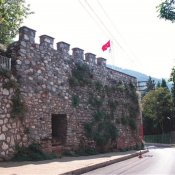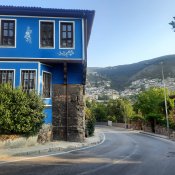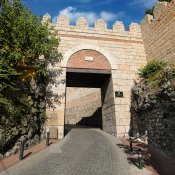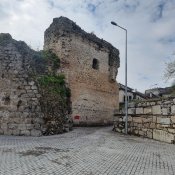Irgandı Bridge
Irgandı Bridge
This bridge was built in 1442, during the reign of Murad II, by Hodja Muslihuddin, the son of Irgandılı Ali. Hodja Muslihuddin is one of the period’s important merchants, who sold the silk he bought in Azerbaijan to Italian merchants. It is known that structures for trading purposes were built by the tradespeople, within the scope of the architectural activities that were relevant during the process of Bursa’s becoming an important trade centre in the 15th century. Irgandı Bridge, with its “arasta” on it (i.e. two rows of shops built along the sides of the bridge), and its stables and warehouses inside the bridge’s main structure, is one of these activities. Timurtash, the son of Abdullah, is known to be the architect of this bridge.
“Irgandı” Bridge is one of four market bridges worldwide, together with Ponte Vecchio, and Rialto Bridge in Italy, and Osma Bridge in Bulgaria.
“Irgandı” bridge is the third bridge, seen from upriver to downriver, spanning Gökdere beck, and connecting the town’s centre to its east.
It is known that the initial bridge was a stone bridge, and that there 16 sections at each side, sheltering 31 shops and 1 masjid, as well as warehouse and stable sections inside its pylons. It was possible to establish its original size, which was 62.50 m in length, and 11.40 m in width. In former times, this bridge had one door at each of its ends, and it is believed that the merchants who came to Bursa were hosted in the rooms built inside the arches, which were designed for the bridge guards and their horses.
Today, the main structure of this bridge consists of a bridge arch measuring 16 m in length, and 11 m in width. There are vaulted inner sections at either side of this arch. The 18 shops of the bazaar are built with a framework system. With its bay-windows, which are supported by means of raking shores, it extends to Gökdere beck. Furthermore, there are warehouses underneath some of them.
In the 18th century, “Irgandı” Bridge was partially destroyed by a flood, and it sustained damage in the 1855 earthquake. In the second half of the 19th century, it became an uncovered bazaar, with its rows of timber-built shops. After the Turkish War of Independence, the bridge dynamited by the occupation forces while leaving Bursa in 1922 collapse. It was renovated in 1949 and in 1989. The reconstruction of this bridge was performed in 2004.



